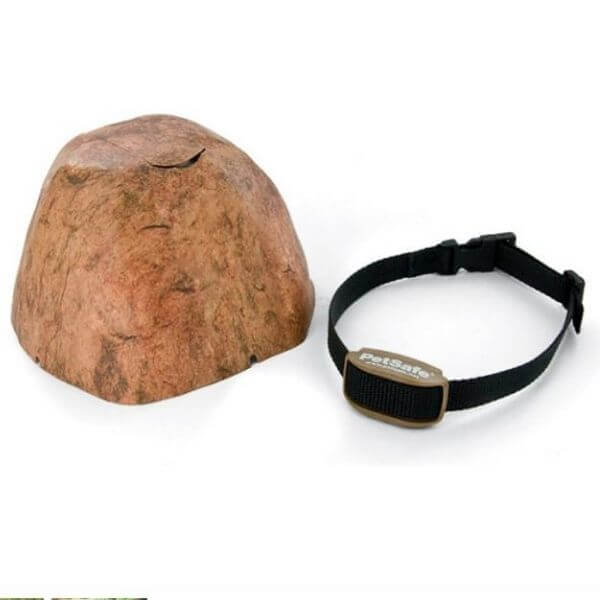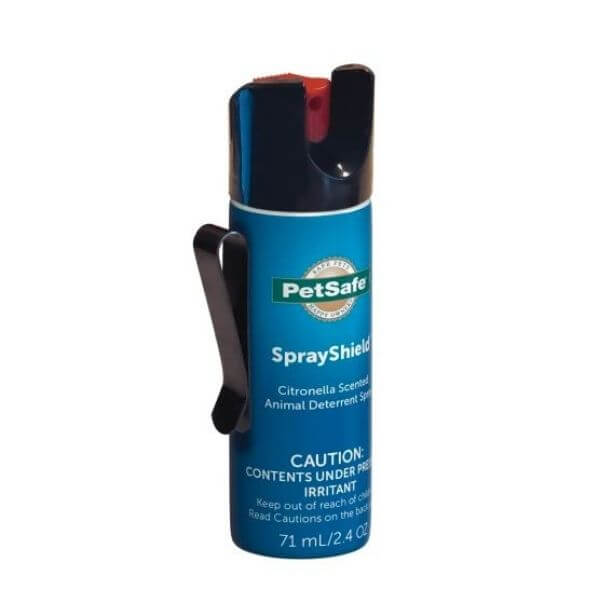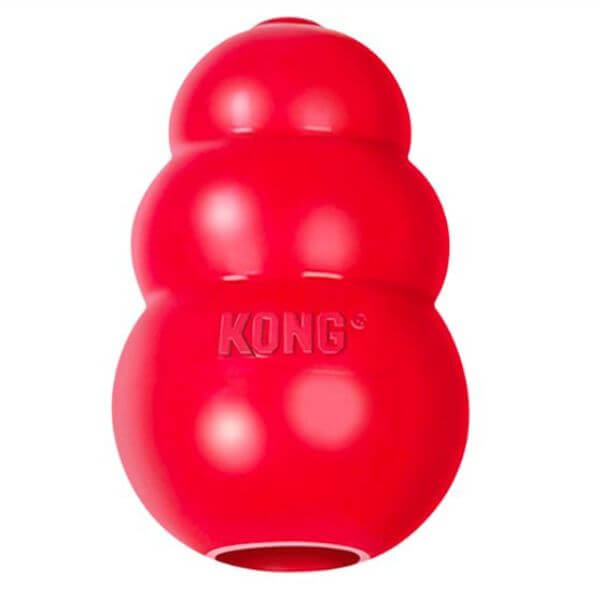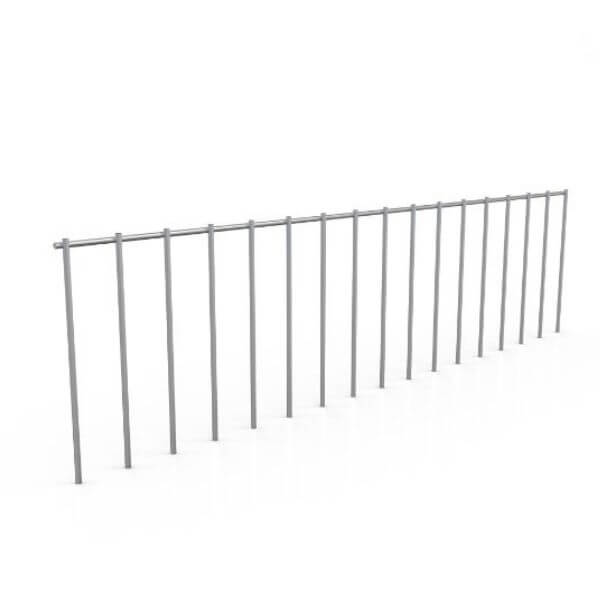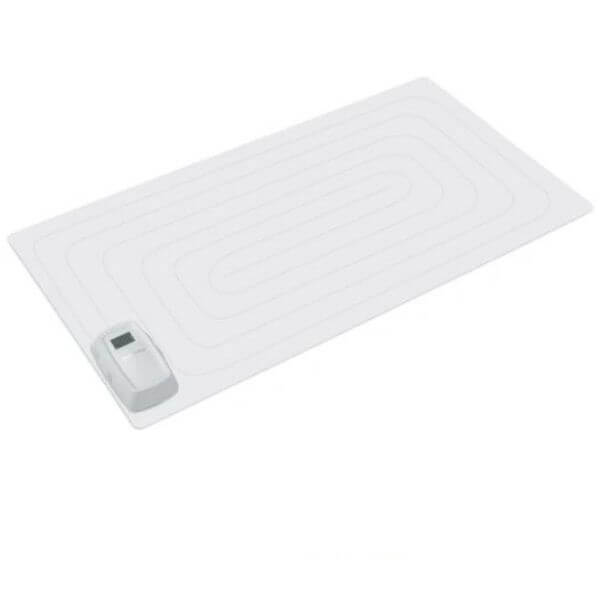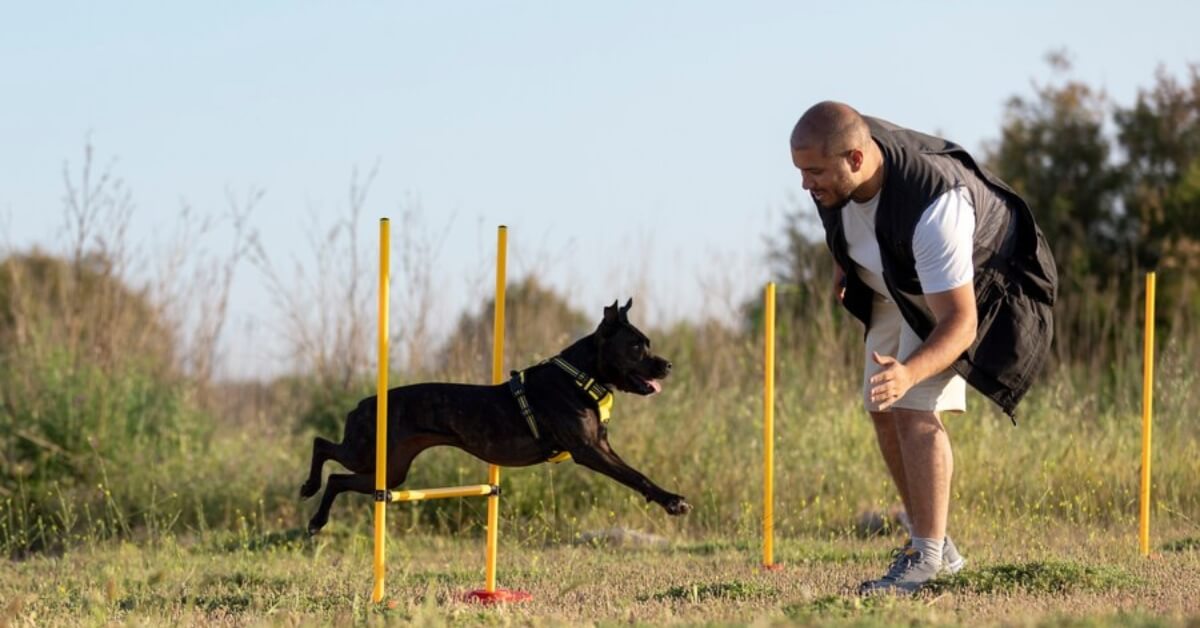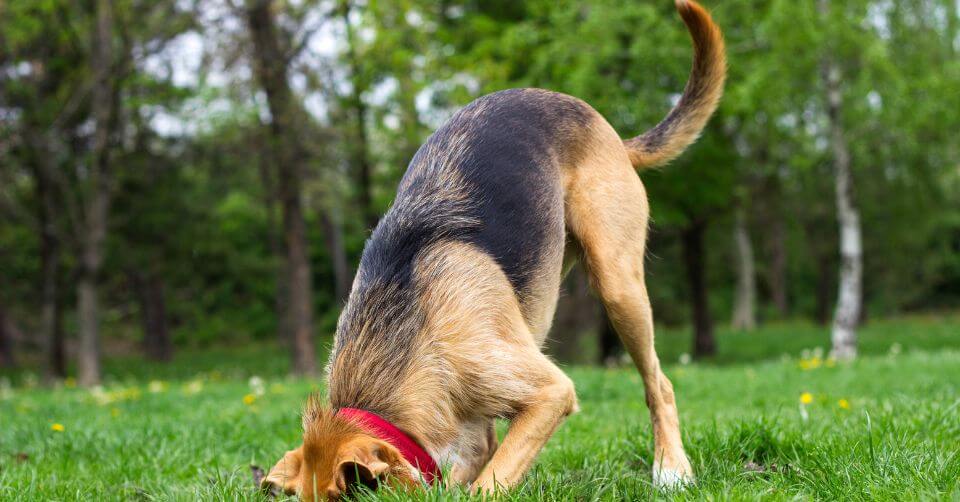
Understanding the Obsessive Digging Behaviour
-
Boredom or Excess Energy
Dogs may dig out of sheer boredom, especially when they are left alone in the yard for extended periods. Similarly, a dog with a lot of energy may dig to burn off some of it. Both boredom and excess energy can often be resolved with more exercise and mental stimulation.
-
Hunting Behavior
Some dogs may dig because they are following their instinct to hunt. If they smell or hear small creatures like moles or gophers in the ground, they might dig in pursuit.
-
Comfort and Protection
Dogs dig to create a cool spot to lie down in hot weather or to find protection from cold, wind, or rain. If the weather is extreme and your dog is outside a lot, this might be the cause of the digging.
-
Escape or Access
Some dogs dig to escape from the yard, especially if they’re left alone for long periods and get bored or anxious. They may also dig to gain access to an area where they want to be, like a garden or underneath a fence.
-
Anxiety or Fear
Dogs suffering from anxiety or fear might engage in excessive digging as a way to relieve their stress. This is especially common in dogs with separation anxiety.
-
Attention-Seeking
If your dog learns that digging gets your attention, even if it’s negative attention, they might continue to dig.
Understanding the reason behind your dog’s digging behavior is the first step in managing it. Depending on the cause, solutions might include providing more exercise, using pest control methods, providing shelter from the weather, securing the yard, addressing anxiety issues, or giving your dog more attention.
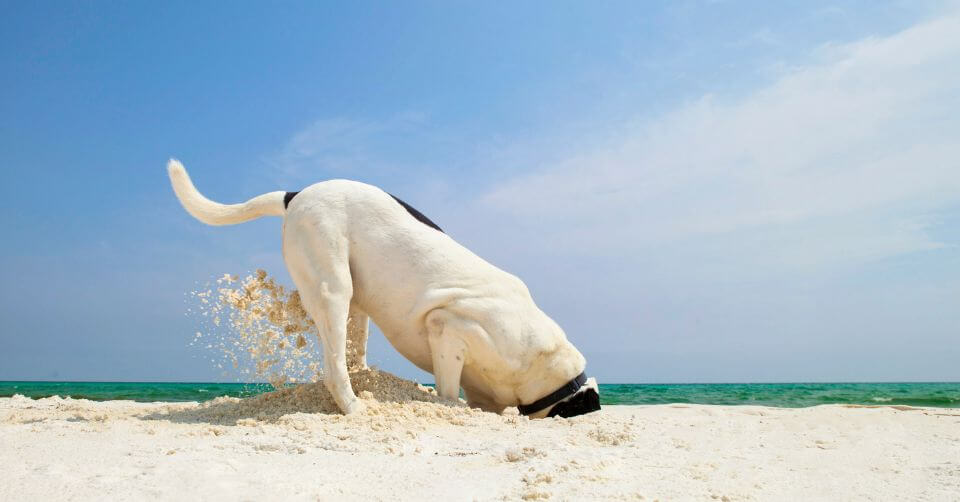
Signs of Obsessive Digging Behaviour
-
Frequent Digging:
If your dog frequently digs whenever it’s outside, it might suggest an obsessive tendency. This repetitive, compulsive action often indicates more than just casual interest.
-
Focused Digging in One Spot
While some dogs dig randomly, others may focus on one spot, frequently returning to it to dig. This could indicate that they are trying to reach something specific or that the spot has become a target of obsession.
-
Large or Deep Holes:
If the holes your dog is digging are particularly large or deep, this could be a sign of obsessive digging. It shows that your dog is spending a lot of time and effort on the task.
-
Damage to Lawn or Garden:
Extensive damage to your yard, garden, or landscaping can indicate an issue. If your dog is destroying plants, digging under fences or barriers, or causing other destruction, it’s a clear sign their digging is becoming problematic.
-
Dirty Nose or Paws:
Regularly noticing a dirty nose or paws on your dog can also be a sign that they are digging obsessively.
-
Unresponsiveness to Distraction or Commands:
If your dog continues digging despite distractions or ignores commands to stop, it might be a sign of obsessive behavior. They may be so focused on the digging that they disregard other stimuli.
-
Inappropriate Digging:
If your dog starts to dig in inappropriate places, such as inside the house, in potted plants, or in designated no-dig zones, this could be a sign of a problem.
These signs can help you identify when your dog’s digging has moved beyond a simple natural behavior and has become a problem. In such cases, it’s important to determine the underlying cause of the digging and address it appropriately.
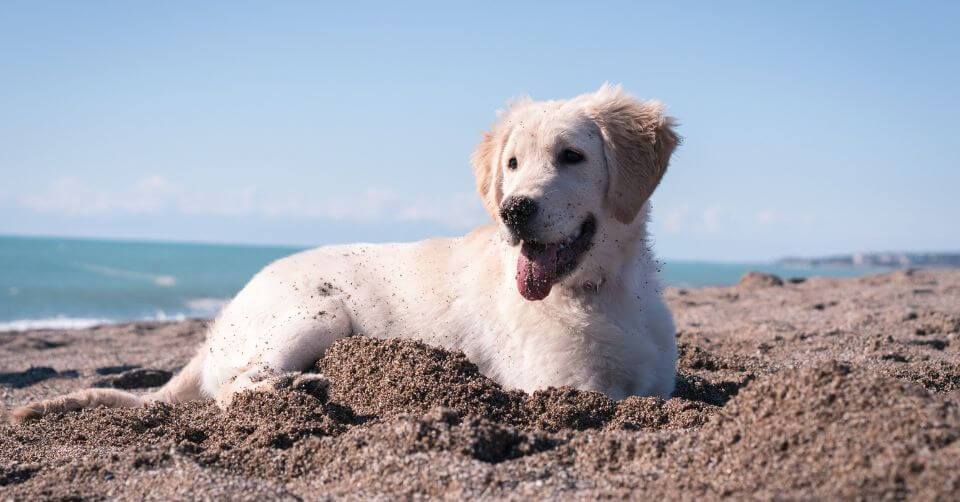
Triggers of Obsessive Digging
-
Hunting Instinct :
Believe it or not, your pup may be on a hunt! Dogs have a heightened sense of smell and can often detect bugs, worms, and other critters that burrow in the ground. They might be digging to try and reach this “prey.” If you notice your dog focusing on one area, sniffing around intently, and then starting to dig, they might be tapping into their inner hunter.
-
Boredom and Lack of Exercise :
Your dog could be bored or have pent-up energy. Dogs require regular exercise and mental stimulation. When these needs are not met, they might resort to activities such as digging to entertain themselves or burn off excess energy. If your dog is regularly left alone in the garden for long periods, it might be digging holes out of sheer boredom.
-
Climate Control :
Here’s a fun fact, your dog might be trying to create their very own heating or cooling system. In hot weather, the soil beneath the surface can be much cooler than the surface, and dogs might dig holes to reach the cooler ground to lie in. Similarly, in cold weather, a dug hole can provide some shelter from the wind and cold.
-
Escape Attempts :
Finally, we have the great escape artists. Some dogs dig to escape from their yard, especially if they’re left alone for extended periods. They might be trying to reach something outside the yard or simply looking for some adventure. If the digging is concentrated around the boundaries of your yard or under your fence or gate, this might be the case.
-
Comfort or Protection :
On hot days, your dog might dig a hole to lie in the cool soil. It’s a survival instinct from their wild ancestors who did the same to escape heat. They may also dig to bury their valuables (like their favorite toy or a treat) for safekeeping, another trait inherited from their ancestors.
-
Anxiety or Fear :
Sometimes, digging can be a sign of distress. If your dog is anxious, scared, or stressed, they might dig as a coping mechanism.
-
Attention-Seeking :
If digging gets your attention, your dog might do it more often, even if the attention they’re getting is negative. They don’t understand the difference between positive and negative attention; they just know they’re getting it.
-
They Just Love It! :
Last but not least, some dogs just love digging! The joy of unearthing something unknown, the fun of playing with dirt, or the satisfaction of a good dig could be enough reasons for them.

How to Handle Your Dog’s Digging Habit – Do’s and Don’ts
Do’s
-
Provide Ample Exercise and Mental Stimulation
Dogs often dig out of sheer boredom, so keeping your dog mentally and physically engaged is key. Regular walks, play sessions, and training exercises can help expend your dog’s energy and reduce their urge to dig.
-
Use Positive Reinforcement Techniques
When your dog chooses to engage in activities other than digging, like playing with their toys or responding to your commands, reward them. This can be in the form of treats, praises, or pats, whichever your dog prefers.
-
Train Them to Understand “No Dig”
Train your dog to understand and respond to the command “no dig.” Whenever you catch them in the act, calmly but firmly say “no dig” and distract them with a toy or activity. Remember, the key is consistency.
-
Create a Designated Digging Zone
If your dog loves to dig, why not give them a proper place to do it? Choose a part of your garden where you’re okay with your dog digging. Encourage them to dig there by burying some of their favorite toys or treats.
Don’ts
-
Avoid Punishments After the Fact
Scolding your dog after you find a hole in the garden won’t stop the digging. Dogs can’t connect past actions with present punishments. Instead, try to catch them in the act and redirect their behavior.
-
Don’t Ignore the Underlying Cause
If your dog digs excessively, there could be a deeper reason, like anxiety or a lack of mental stimulation. Understanding the root of the behavior is essential to effectively manage it.
-
Avoid Leaving Your Dog Unsupervised in the Garden for Long Periods
If your dog spends long periods unsupervised in the garden, it’ll likely get bored and start to dig. Try to keep outdoor sessions interactive and engaging.

Recommended Products to Manage the Digging Behavior in Dogs
Key Features
| The system can be customized to protect multiple areas in your yard. | |
| It uses static correction to deter dogs from approaching restricted areas. | |
| It has a waterproof receiver collar suitable for dogs weighing more than 5 pounds. | |
| The barrier range can be adjusted up to 12 feet in diameter. | |
| The collar battery lasts up to 3 months before needing replacement. | |
| The system is compatible with other PetSafe Pawz Away pet barrier products. |
Pros
| The system is easy to set up and use. | |
| It is effective at keeping dogs away from certain areas. | |
| The waterproof collar ensures the product can be used in various weather conditions. | |
| It can be used both indoors and outdoors. |
Cons
| The static correction might be uncomfortable for some dogs. | |
| It requires frequent battery changes. | |
| It is not suitable for dogs under 5 pounds. | |
| The system may not work as effectively on larger properties. |
Key Features
| The bowl’s design slows down eating speed, reducing bloating and improving digestion. | |
| It is made from food-safe materials and is free from BPA, PVC, and phthalate. | |
| It is dishwasher safe, making it easy to clean. | |
| Comes in different sizes and designs to suit different breeds and sizes of dogs. | |
| It offers a fun and interactive way to feed your dog. | |
| Its non-slip base prevents sliding and spilling. |
Pros
| It promotes healthier eating habits. | |
| It provides mental stimulation to deter digging. | |
| It’s easy to clean and maintain. | |
| The different sizes and patterns can accommodate a wide range of dogs. |
Cons
| Not all dogs may take to the interactive eating style. | |
| Some aggressive eaters might still manage to eat fast. | |
| The bowl might be too large for very small breeds. | |
| It’s only a distraction, and may not completely stop a dog from digging. |
Key Features
| Made from durable, pet-safe wood. | |
| Features a small pet door for convenience. | |
| Easy to install without the need for additional hardware. | |
| Suitable for smaller dogs and puppies. | |
| Provides a physical barrier to prevent dogs from accessing certain areas. | |
| Adjustable width to fit different doorways. |
Pros
| Helps limit your dog’s access to certain areas. | |
| Made from durable, pet-safe materials. | |
| Easy to install and adjust. | |
| Features a convenient small pet door. |
Cons
| Not suitable for large dogs or strong chewers. | |
| Only provides a physical barrier, doesn’t discourage digging behavior. | |
| Might be too low for some dogs, who may jump over. | |
| Some dogs may attempt to chew on the wooden gate. |
Key Features
| The spray is citronella-based, which dogs find unpleasant. | |
| It’s a humane, non-harmful method of interrupting unwanted behaviors. | |
| The spray can reach up to 10 feet. | |
| The canister is compact, easy to carry, and includes a belt clip. | |
| The product can also be used to deter aggressive or unfriendly dogs during walks. | |
| It provides a quick and immediate response to unwanted behaviors. |
Pros
| It’s a humane and non-injurious method of behavioral correction. | |
| Easy to carry and use when walking or training your dog. | |
| It has a good range, which makes it effective in outdoor environments. | |
| It can also be used for personal protection against aggressive dogs. |
Cons
| The smell of citronella may be unpleasant to some people. | |
| Not all dogs may react to the scent. | |
| Frequent use may require replacement canisters. | |
| It is deterrence, not a solution to the root cause of digging. |
Key Features
| The KONG toy is made from natural red rubber, which is tough and safe for chewing.. | |
| It has an irregular shape that bounces unpredictably, providing more fun and challenge. | |
| The hollow center can be stuffed with treats or food to keep dogs engaged. | |
| It comes in various sizes to suit different dog breeds and sizes. | |
| It helps clean teeth and soothe gums. | |
| The KONG toy is dishwasher safe and easy to clean. |
Pros
| Durable and suitable for aggressive chewers. | |
| It offers mental stimulation that can distract dogs from digging. | |
| It’s easy to clean and maintain. | |
| Versatile in usage – can be used for fetch games, chewing, or treat dispensing. |
Cons
| Some dogs may not be interested in the toy. | |
| It can be tough to clean if sticky treats are used. | |
| It may be too hard for some dogs, depending on their chewing habits. | |
| The unpredictable bounce may not be suitable for indoor use. |
Key Features
| The barrier is constructed with 4-gauge galvanized steel for durability. | |
| It can be easily installed using just a hammer and requires no digging. | |
| It is designed to extend the protection of any type of fence. | |
| It comes in different sizes to fit various types of fences and dogs. | |
| The product effectively prevents dogs from digging under fences. | |
| It can be used to secure both small and large areas. |
Pros
| It provides a physical barrier that effectively prevents dogs from digging. | |
| The installation process is straightforward and does not require any specialized tools. | |
| The barrier is durable and can withstand various weather conditions. | |
| It is a humane solution to prevent digging without causing harm to the dog. |
Cons
| The sharp spikes may pose a risk if not handled carefully during installation. | |
| It may not be suitable for rocky or hard soil. | |
| The aesthetic of the barrier might not be pleasing to everyone. | |
| It only prevents digging near the fence, not in other areas. |
Key Features
| Uses a harmless static pulse to discourage dogs from digging. | |
| Can be placed in any area where your dog digs. | |
| It comes in various sizes to cover different areas. | |
| Lightweight and portable. | |
| Easy to clean and maintain. | |
| Suitable for dogs of all sizes. |
Pros
| Effectively discourages dogs from digging in certain areas. | |
| Easy to set up and use. | |
| Suitable for dogs of all sizes. | |
| Lightweight and portable for easy repositioning. |
Cons
| Requires regular charging or battery replacement. | |
| Some dogs may not be deterred by the static pulse. | |
| Not suitable for outdoor use. | |
| May not be effective on thickly carpeted or cushioned areas. |
Conclusion
From understanding why dogs dig and recognizing the signs of a potential issue, to pinpointing triggers and exploring how to manage the behavior, we’ve dug deep into the problem.
Strategies we’ve covered include offering alternatives to digging, managing the environment, increasing physical and mental stimulation, and considering dog-proof garden designs. Additionally, we’ve emphasized the importance of patience and positive reinforcement in changing any dog’s behavior.


